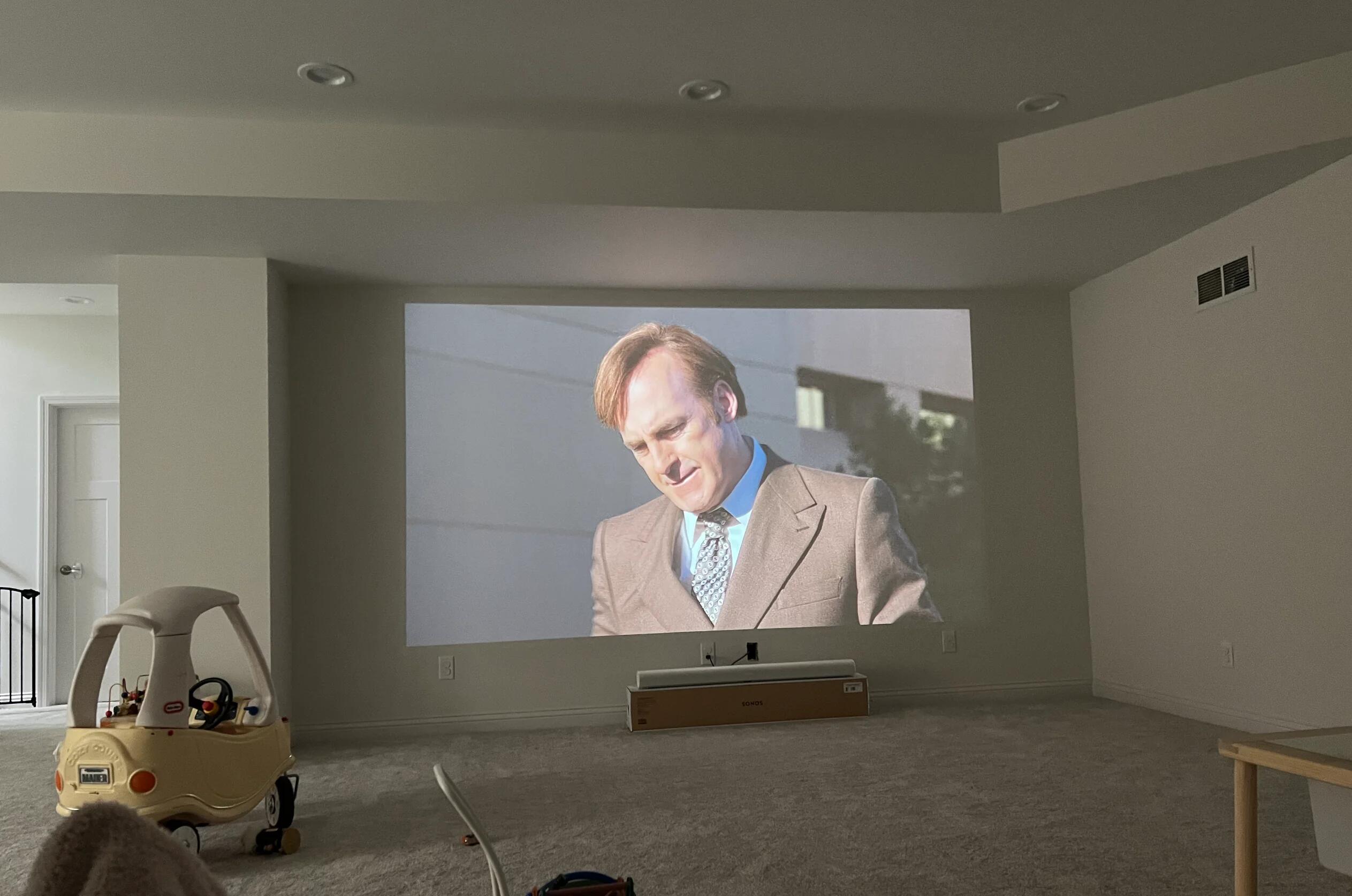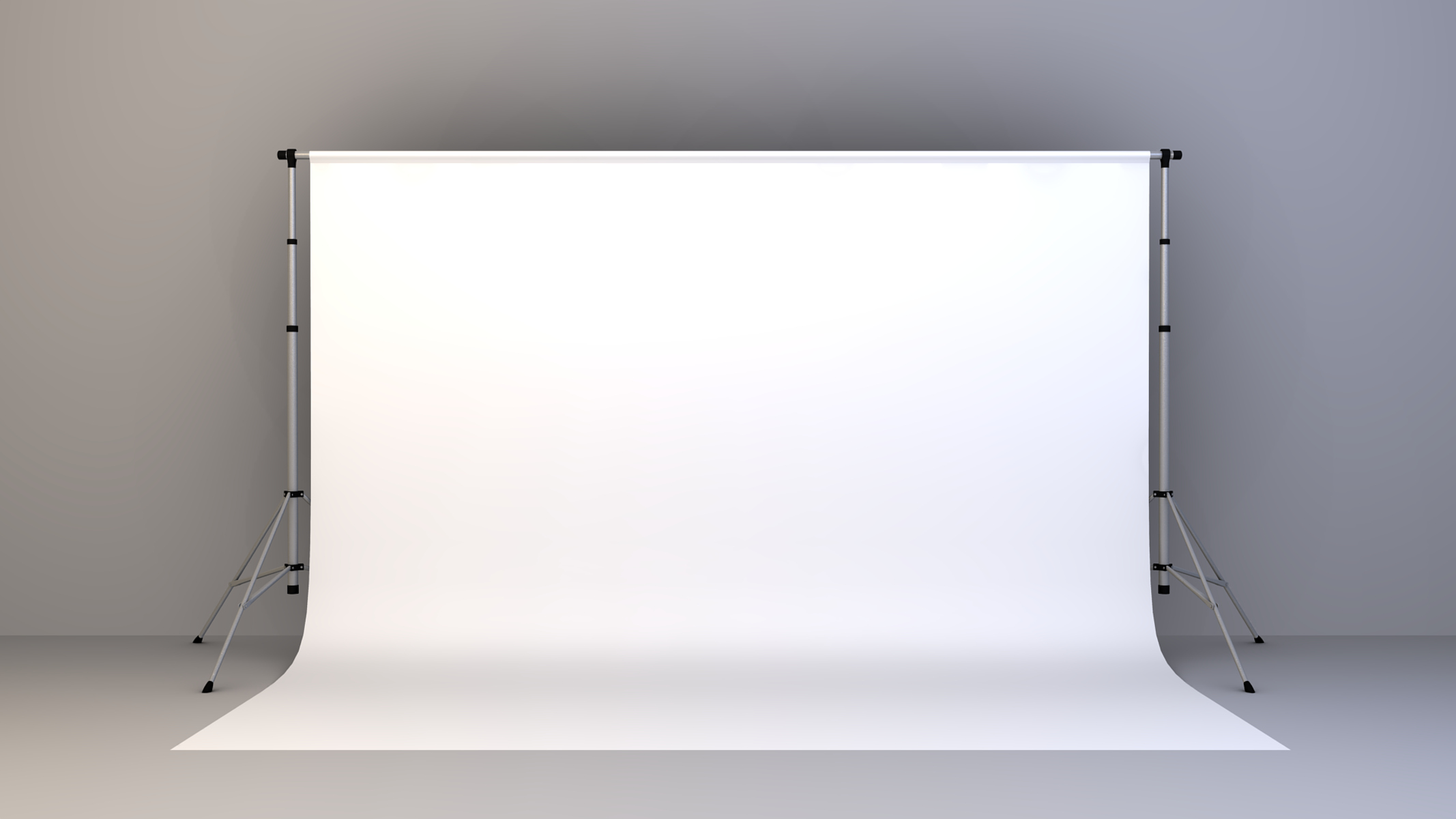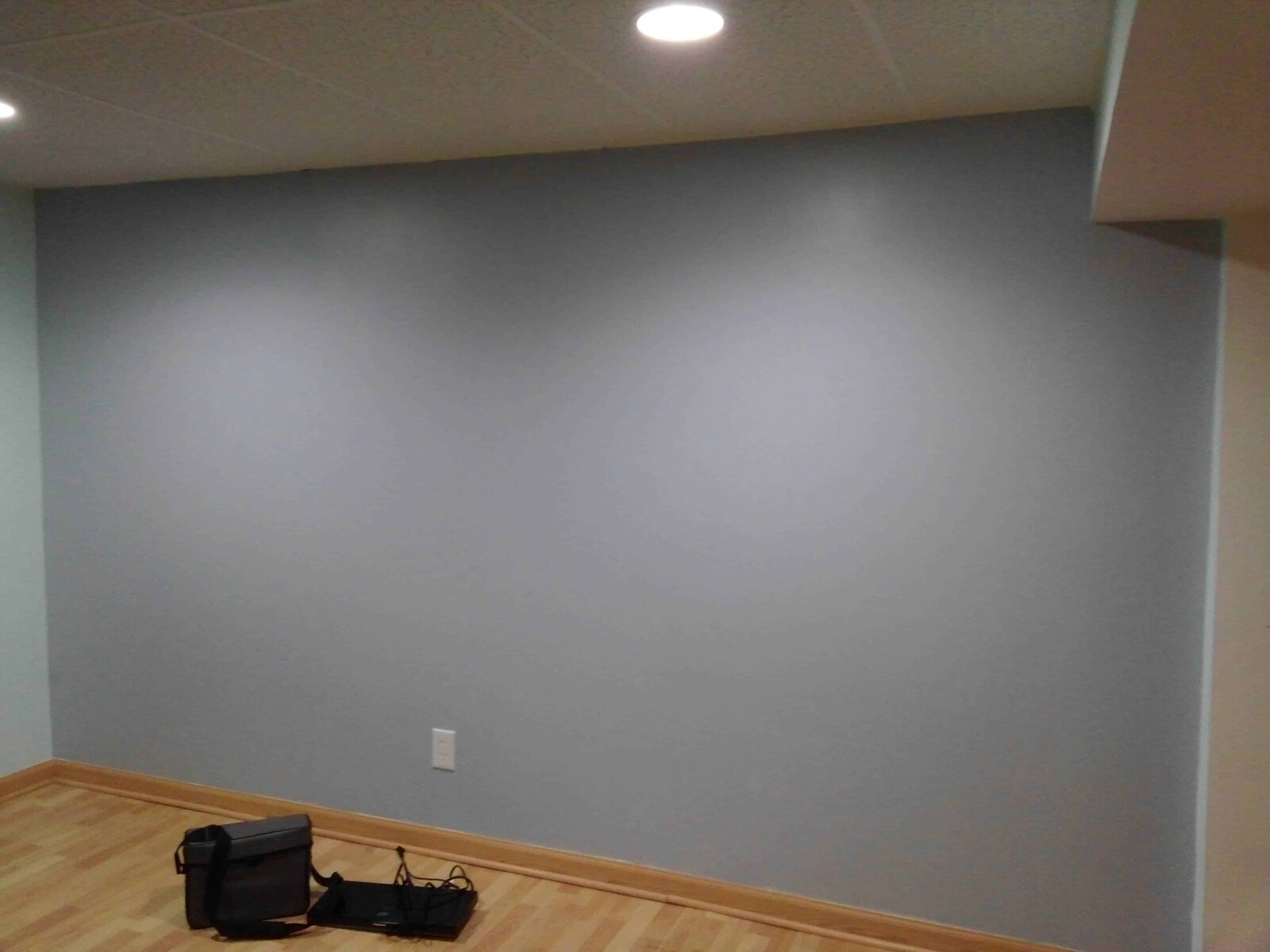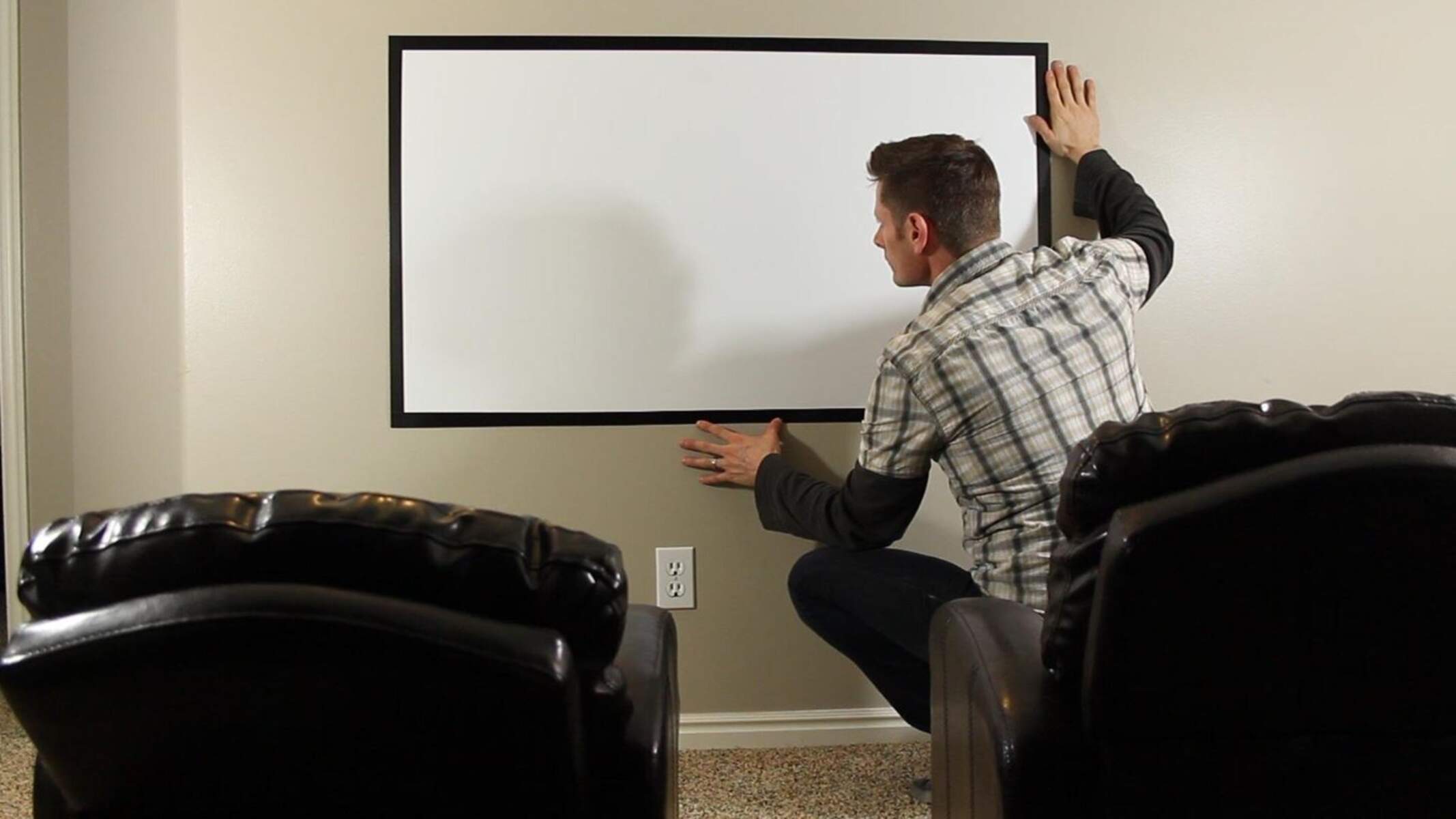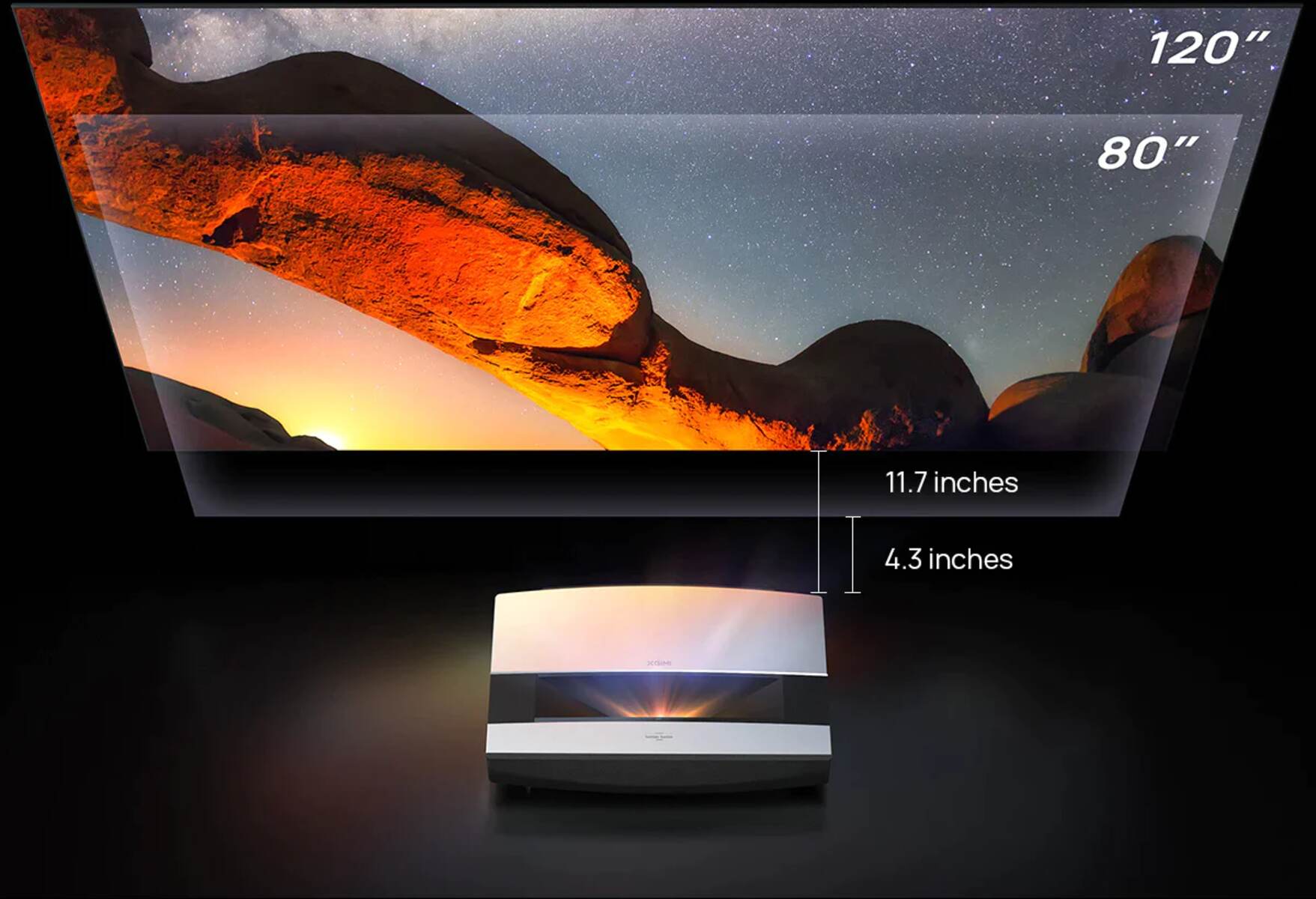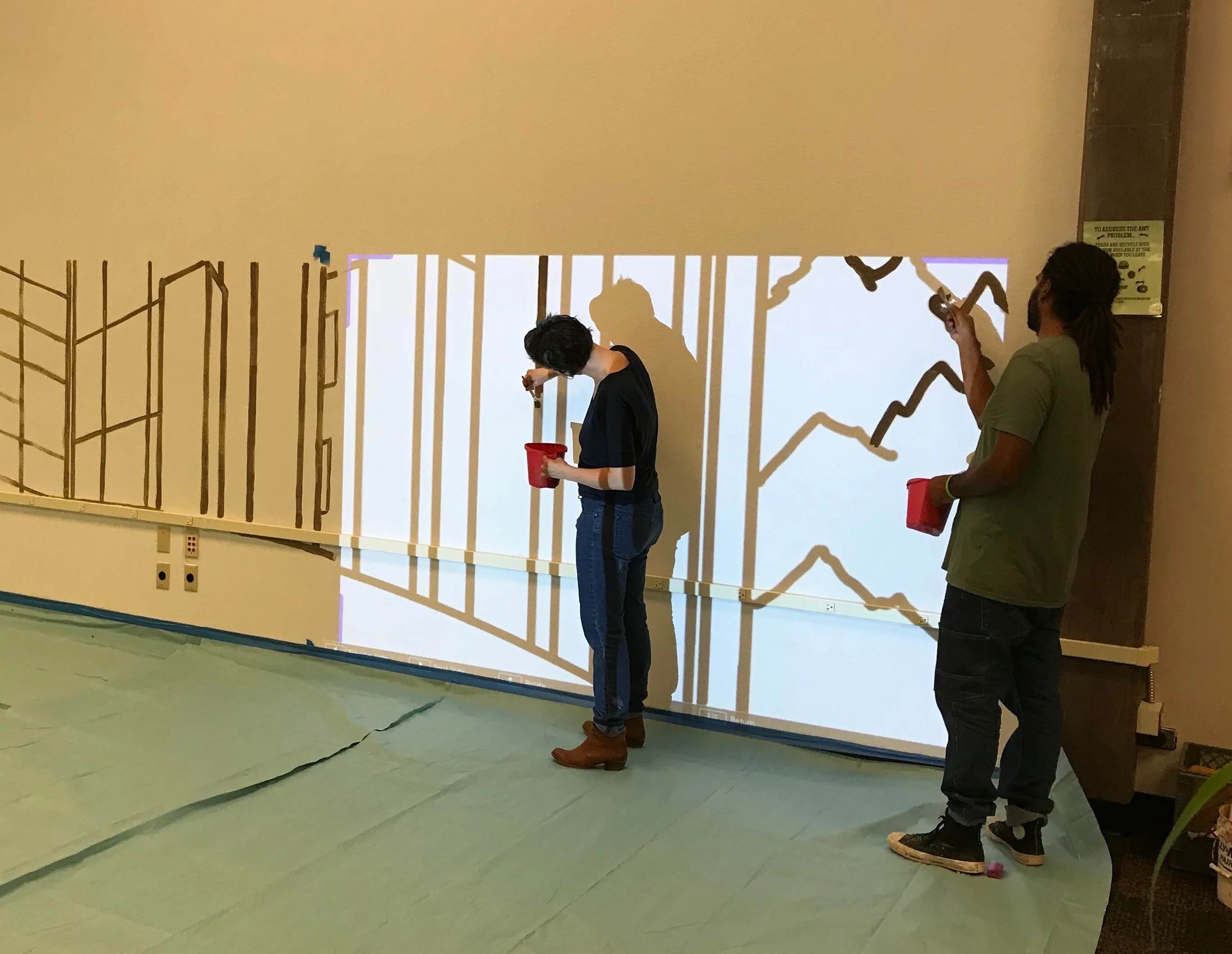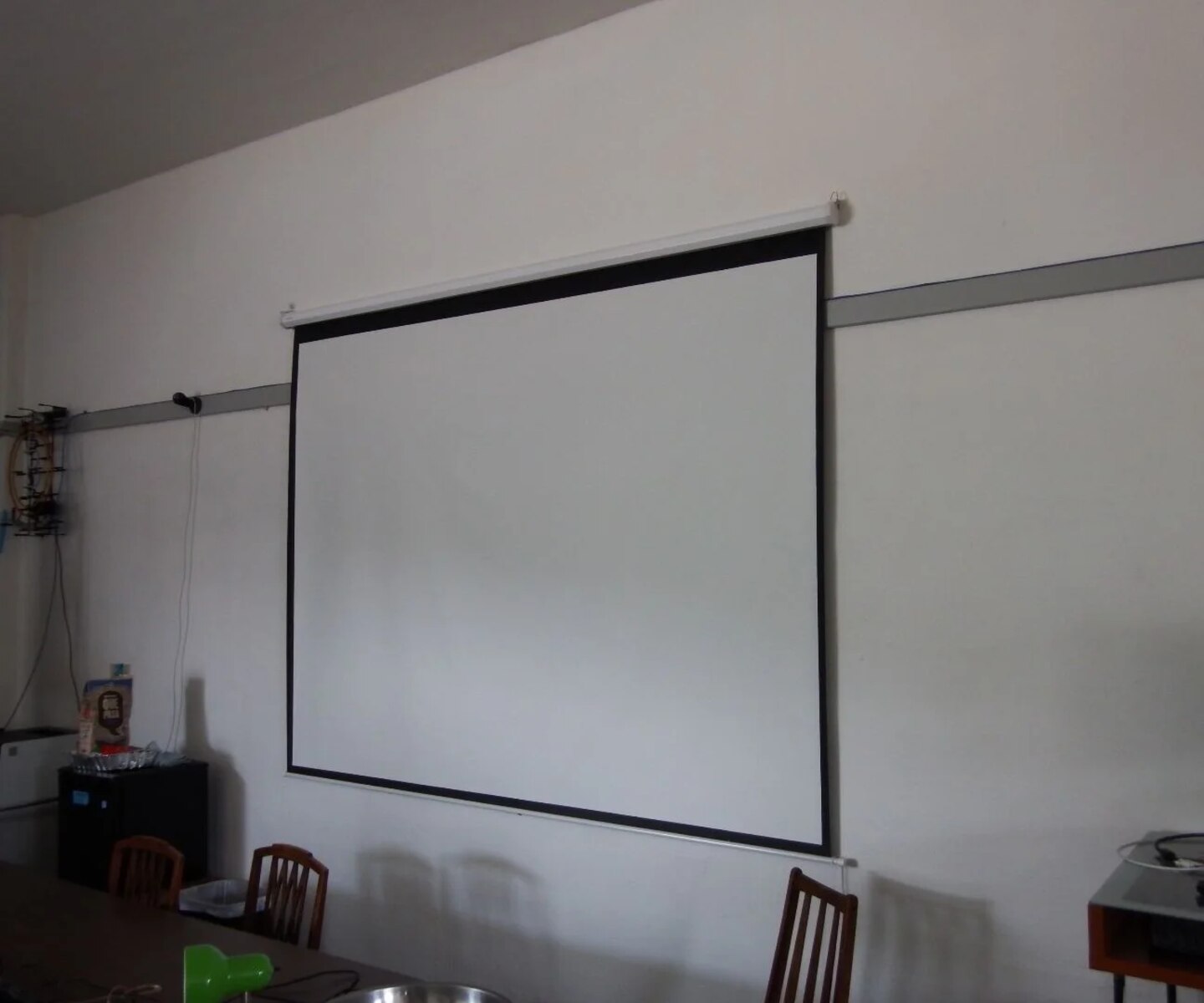Introduction
Welcome to our guide on choosing the perfect paint color for your projector screen! Whether you’re a movie enthusiast, gamer, or professional presenter, having the right color for your projector screen can significantly enhance your viewing experience. The color of your screen plays a crucial role in the quality of the projected image, as it affects contrast, brightness, and overall visual clarity.
Choosing the right paint color for your projector screen is not a decision to be taken lightly. With so many options available, it can be overwhelming to know which color will provide the best viewing experience for your specific needs. That’s why we’re here to help you navigate through the various factors to consider when selecting a paint color.
An important thing to note is that while the process of choosing the right paint color may seem technical, it’s also a chance to express your personal style and creativity. The color you choose can have a significant impact on the mood and ambiance of the room. Whether you opt for a classic white, a sleek gray, or a bold and vibrant shade, your projector screen can become a visually striking focal point.
In this guide, we will explore some of the most popular paint colors for projector screens and discuss the factors you should consider before making your final choice. Additionally, we’ll provide tips on testing and tweaking the color to ensure optimal results for your viewing pleasure.
So, let’s dive in and discover the wonderful world of projector screen colors!
Understanding the Importance of Color for a Projector Screen
When it comes to projector screens, color is more than just a matter of aesthetics. The right color can greatly impact the overall image quality and viewing experience. Understanding the importance of color for a projector screen will help you make an informed decision when choosing the perfect paint color.
One of the key factors to consider is contrast. A projector screen with a proper color balance can enhance the contrast between the projected image and the background, resulting in a sharper and more defined picture. The color of the screen can also affect the perceived brightness of the image. Choosing the right color can boost the brightness of the projected content, making it more vivid and engaging.
Another crucial consideration is ambient light. The color of your projector screen can help minimize the impact of ambient light in the room. For example, a white or gray screen can reflect ambient light, preventing it from interfering with the projection. On the other hand, a black screen can absorb ambient light, enhancing the contrast even further.
The color of the projector screen can also affect the color accuracy of the projected image. Different colors can alter the way colors are displayed, leading to variations in hue, saturation, and overall color accuracy. It’s important to choose a color that preserves the integrity of the original content and accurately reproduces the intended colors.
Additionally, the color of the screen can impact the viewing angle. Some colors maintain better image quality and brightness when viewed from off-center angles, ensuring a consistent viewing experience for everyone in the room.
Considering these factors, it becomes clear that selecting the right color for your projector screen is essential for optimizing the image quality and overall viewing experience. By understanding the impact of color on contrast, brightness, ambient light, color accuracy, and viewing angles, you can make an informed decision when choosing a paint color for your projector screen.
Factors to Consider When Choosing a Paint Color
Choosing the perfect paint color for your projector screen involves taking several factors into consideration. Let’s explore these factors to help you make an informed decision.
1. Ambient Light Conditions: Take note of the amount of natural and artificial light present in the room where the projector will be used. A darker room with controlled lighting conditions might allow for a wider range of paint color options, while a room with abundant light may require a screen color that minimizes glare and enhances contrast.
2. Contrast Enhancement: Consider the contrast ratio of your projector and the type of content you often watch or present. A high-contrast projector might benefit from a darker screen color, such as gray or black, which can enhance dark scenes and improve black levels.
3. Color Accuracy: Think about the accuracy of color reproduction you desire. For accurate color representation, a neutral gray screen color may be the best choice. If you prefer vivid and vibrant colors, a white screen might suit your needs better, as it reflects the most light.
4. Viewing Distance and Angle: Determine the distance between the projector and the screen, as well as the viewing angles from different seating positions in the room. The screen color should provide consistent image quality from various positions, ensuring everyone enjoys a clear and immersive viewing experience.
5. Room Size and Decor: Consider the size of the room and its decor. A smaller room with minimal ambient light might benefit from a lighter screen color to make the space feel more open. On the other hand, a larger room with darker walls and furnishings might allow for a wider range of screen color options.
6. Personal Preference and Mood: Lastly, don’t forget to consider your personal preference and the mood you want to create in the room. Are you aiming for a sleek and modern look with a gray or black screen? Or do you prefer a traditional cinema experience with a classic white screen? The choice is yours and should align with your aesthetic vision.
By considering these factors, you can narrow down the options and select a paint color that suits your specific needs, enhances the projected content, and complements the overall ambiance of the room.
Popular Paint Colors for Projector Screens
When it comes to choosing a paint color for your projector screen, several options have proven to be popular among enthusiasts and professionals alike. Let’s explore some of the most commonly used colors and their characteristics.
1. White: White is the most traditional and widely used color for projector screens. It offers excellent color reproduction and brightness, making it suitable for a variety of content, from movies to presentations. White screens reflect the most light, ensuring a vibrant and vivid picture. However, they might not be ideal for rooms with high levels of ambient light, as they can cause some glare or washout.
2. Gray: Gray screens are designed to enhance contrast and black levels. They are especially suitable for rooms with some ambient light, as they help minimize the impact of light pollution and improve image quality. Gray screens provide deeper blacks and can be a great choice for home theaters or gaming setups, where creating a cinematic experience is desired.
3. Black: While black might not be the first color that comes to mind when thinking about projector screens, it is gaining popularity among enthusiasts looking for maximum contrast and immersive experiences. Black screens absorb ambient light, eliminating any potential reflections or washout. However, they might require a higher projector brightness to compensate for the light absorption.
4. Silver: Silver screens are known for their ability to enhance brightness and maintain good contrast. They work well in rooms with moderate ambient light and can provide a truly dynamic and captivating viewing experience. Silver screens are particularly popular for commercial applications, such as movie theaters or large-scale presentations.
5. Dark blue: Dark blue screens offer an alternative option for those seeking a unique and visually appealing projector screen color. The dark blue hue can enrich certain colors and add a touch of sophistication to the viewing experience. While not as commonly used as white or gray, dark blue screens can create a distinct ambiance.
It’s worth mentioning that each color option has its own pros and cons, and the choice ultimately depends on your specific requirements and preferences. Consider factors such as the room’s lighting conditions, the content you primarily watch or present, and the desired mood and aesthetic of the space. If possible, test different colors in your setup to find the one that provides the best balance between image quality, brightness, contrast, and ambiance.
In the end, the popularity of these different paint colors demonstrates the variety of options available to suit different needs and preferences. Choose the color that aligns with your vision and enhances your overall viewing experience.
White
White projector screens are perhaps the most widely used and popular choice among users. The color white offers excellent color reproduction and amplifies the brightness of the projected image, making it an ideal option for various types of content, including movies, TV shows, presentations, and gaming.
One of the key advantages of a white projector screen is its ability to reflect the most light. This ensures that the colors are vibrant, crisp, and true to life. The bright nature of the white screen also results in a high level of visibility, even in well-lit rooms. However, it’s important to note that white screens may be more prone to glare and washed-out images in environments with excessive ambient light.
White projector screens are versatile, working well with both LCD and DLP projectors. They offer a neutral canvas that accurately reproduces colors as they were intended by the content creators. This makes them well-suited for professional presentations where color accuracy is crucial, ensuring that your visuals are displayed as intended.
Another benefit of white screens is that they are often more affordable compared to other color options. They are readily available in various sizes and fabric types, making it easy to find a white screen that fits your budget and installation requirements.
White screens are also versatile in terms of their usage in different room settings. They can seamlessly integrate into various decor styles, whether it’s a home theater, a classroom, or a conference room. The clean and neutral look of the white screen ensures that the focus remains on the content being projected.
However, it’s essential to consider the lighting conditions in your viewing environment. If you plan to watch movies or play games in a room with lots of ambient light, you may need to consider additional measures to control the light and minimize glare on the white screen. Strategic placement of curtains or blinds, as well as using dimmer lights, can help create an optimal viewing experience.
In summary, white projector screens are a popular choice due to their ability to produce vibrant color reproduction and brightness. They offer versatility, affordability, and work well with different projector types. While they may be affected by excessive ambient light in the room, with proper light control measures, a white screen can deliver an immersive viewing experience for a wide range of content.
Gray
Gray projector screens have gained popularity among enthusiasts seeking enhanced contrast and improved black levels. The color gray offers a unique viewing experience, particularly in rooms with moderate ambient light or those dedicated to creating a home theater environment.
One of the key advantages of using a gray projector screen is its ability to enhance the contrast ratio of the projected image. Gray screens are designed to absorb ambient light and reduce the reflection of stray light, resulting in a darker background and more defined black levels. This, in turn, allows for a greater level of detail and depth in dark scenes, making them particularly suitable for movies, video games, and content with rich shadow details.
Gray screens are available in various shades, ranging from light gray to dark charcoal. The choice of shade depends on the specific lighting conditions in your room and personal preferences. Lighter shades of gray tend to work better in rooms with some ambient light, while darker shades provide a more immersive cinematic experience in dedicated home theater settings.
Another advantage of gray screens is that they offer wider viewing angles compared to other colors. This means that viewers sitting off-center can still enjoy a consistent and high-quality image without significant loss of brightness or color accuracy. This is especially beneficial for larger rooms where multiple seating positions need to be accommodated.
It’s important to note that using a gray screen may result in a slight reduction in overall brightness compared to a white screen. However, the trade-off comes in the form of improved black levels and contrast. Some projectors may require adjustments to the brightness and contrast settings to optimize the image for gray screens.
Gray projector screens can also add a touch of elegance and sophistication to your viewing space. The darker color provides a sleek and modern aesthetic, complementing the decor of many contemporary home theaters. Additionally, the slight color shift towards gray can enhance the color saturation and vibrancy, resulting in a more immersive and engaging viewing experience.
In summary, gray projector screens excel in enhancing contrast and black levels, making them ideal for viewing environments with moderate ambient light. They offer wider viewing angles and a unique aesthetic that can elevate the cinematic experience. Whether you are watching movies, gaming, or enjoying multimedia presentations, a gray projector screen can provide you with a visually captivating and immersive display.
Black
While black may not be the traditional choice for projector screens, it has gained popularity among enthusiasts seeking the ultimate immersive viewing experience. Black projector screens offer a unique set of advantages and considerations that set them apart from other color options.
One of the notable advantages of using a black projector screen is its ability to absorb ambient light. Unlike lighter-colored screens that reflect light, black screens minimize the impact of stray light sources in the room, resulting in deeper blacks, enhanced contrast, and improved image quality. This makes black screens particularly suitable for dedicated home theater rooms, where light control is paramount.
By absorbing ambient light, black screens can create a more immersive viewing environment, as they help eliminate distractions and maintain focus on the projected content. This results in enhanced clarity, particularly in darker scenes, and a more dynamic viewing experience overall.
It’s important to note that using a black screen may require a higher output and brightness from the projector to compensate for the light absorption. This ensures that the image remains clear and vibrant, even in darker scenes. Opting for a projector with higher brightness levels and contrast capabilities is recommended when considering a black screen.
In terms of aesthetics, black projector screens can add a touch of sophistication and elegance to your viewing space. The sleek and modern appearance of a black screen can seamlessly integrate into various design styles. It provides a visually appealing backdrop that enhances the overall ambiance of the room, emphasizing the cinematic experience.
However, there are a few important considerations when using a black screen. Firstly, the viewing environment should have complete light control to prevent any unwanted reflections or glares on the screen. This might involve using blackout curtains, installing a dedicated lighting system, or minimizing sources of ambient light. Proper planning and setup are crucial to fully realize the benefits of a black screen.
Additionally, it’s worth noting that black screens may have a narrower optimal viewing angle compared to other colors. Viewers who are seated at extreme angles may experience a slight loss in brightness and color accuracy. This is an important factor to consider, especially in larger viewing spaces where multiple seating positions need to be accommodated.
In summary, black projector screens offer a unique and immersive viewing experience, with enhanced contrast, deep blacks, and a sophisticated aesthetic. They require proper light control and consideration of projector brightness to ensure optimal performance. If you are looking to create a dedicated home theater or immersive gaming experience, a black screen can elevate your viewing environment to new heights.
Silver
Silver projector screens are a popular choice among professionals and enthusiasts seeking a balance between brightness and contrast. These screens are designed to enhance image brightness while maintaining good contrast levels, making them suitable for various viewing environments and applications.
One of the key advantages of using a silver projector screen is its ability to improve image brightness. Silver screens have a reflective surface that helps to amplify the brightness of the projected image, making it appear more vibrant and engaging. This is particularly beneficial in rooms with moderate levels of ambient light, where maintaining image visibility and sharpness is crucial.
Additionally, silver screens offer improved contrast compared to traditional white screens. The silver coating helps to enhance the difference between dark and light areas of the image, resulting in more defined black levels and improved overall image quality. This makes silver screens a preferred choice for watching movies with rich shadow details or playing video games with immersive color palettes.
Another advantage of silver projector screens is their ability to maintain better image quality from wider viewing angles. This means that viewers sitting off-center can still enjoy a high-quality and well-balanced image with minimal loss of brightness or color accuracy. This makes silver screens a suitable choice for larger rooms or setups where multiple seating positions need to be accommodated.
It’s worth noting that silver screens may have a slight color shift, often leaning towards warmer tones. While this color shift can accentuate certain colors and add depth to the image, it may require slight adjustments to the projector’s color settings for optimal color reproduction.
Silver screens are commonly used in commercial applications, such as movie theaters, conference rooms, and large-scale presentations. The combination of enhanced brightness, improved contrast, wider viewing angles, and color enhancement makes silver screens an excellent choice for venues where a captivating and immersive visual experience is desired.
When considering a silver projector screen, it’s important to select one that is of high quality and has a smooth and uniform reflective surface. This ensures that the projected image is clear and free from hotspots or distortions. Additionally, proper consideration should be given to the lighting conditions in the room, as excessive ambient light can still affect the viewing experience on silver screens.
In summary, silver projector screens offer a balance between brightness and contrast, making them a versatile choice for various viewing environments. They provide enhanced image brightness, improved contrast, wider viewing angles, and color enhancement. Whether it’s for a movie theater or a conference room, a silver screen can elevate the visual experience and captivate audiences with its vibrant and immersive display.
Dark Blue
Dark blue projector screens offer a unique and visually striking option for those seeking a projector screen color that stands out from the traditional choices. While not as commonly used as white or gray screens, dark blue screens can create a distinct ambiance and add a touch of sophistication to your viewing space.
The dark blue color of the screen can enrich certain colors and add depth to the projected image. This can result in a more immersive visual experience, particularly for content with vibrant and saturated color palettes. Dark blue screens can enhance the richness and intensity of blues, purples, and even some warmer colors, providing a unique and captivating viewing experience.
Additionally, dark blue screens can help create a dramatic and cinematic atmosphere in your viewing space. The rich and deep blue hue adds a level of elegance and sophistication, making your viewing area feel like a true theater environment. This is especially suitable for dedicated home theaters or spaces where creating a premium viewing experience is a priority.
Dark blue screens can work well in rooms with controlled lighting conditions, such as those with dimmable lighting or blackout curtains. This allows the screen to maintain its impact without any unwanted reflections or glare. It’s important to note that in rooms with excessive ambient light, dark blue screens may not provide optimal performance, as they require a darker environment to fully showcase their unique characteristics.
When choosing a dark blue screen, it’s essential to consider the color accuracy and balance of the projector. Some projectors may need slight adjustments to the color settings to ensure accurate and consistent color reproduction on the dark blue screen. It’s recommended to test the combination of your projector and the dark blue screen to achieve the desired results.
While dark blue screens offer a visually captivating option, it’s important to consider the specific needs and preferences of your viewing setup. Dark blue screens may not be the ideal choice for every situation, and they may require careful consideration of the lighting conditions and color accuracy requirements. However, for those who want to add a touch of uniqueness and elegance to their viewing space, a dark blue projector screen can create a captivating and immersive experience.
Testing and Tweaking the Color
Once you’ve chosen a paint color for your projector screen, it’s important to test and tweak the color to ensure optimal results. Testing allows you to fine-tune the color settings and make any necessary adjustments to achieve the best image quality and viewing experience.
Start by painting a small section of your wall or a sample board with the chosen color. This will give you a visual representation of how the color will appear when projected onto a larger screen surface. Consider factors such as the brightness, contrast, color accuracy, and overall visual appeal.
Next, set up your projector and project various types of content onto the painted section. Pay close attention to the image quality, including color accuracy, sharpness, and black levels. Adjust the projector settings as needed to achieve the desired image quality.
It’s a good idea to test the color in different lighting conditions. Dim the lights, simulate daylight conditions, and test the color in both bright and dark room environments. This will help you understand how the color performs under various lighting scenarios and whether any modifications are required.
During testing, it’s also worth experimenting with different viewing distances and angles. Move around the room and view the projected image from various positions to ensure a consistent and enjoyable viewing experience for all viewers. This will help you determine if any adjustments need to be made to the screen placement or seating arrangement.
If you’re not satisfied with the initial results, don’t be afraid to tweak the color further. You can experiment with adding a small amount of a different color to the original paint to create a custom shade or try layering different colors to achieve the desired effect. This allows you to fine-tune the color to match your specific preferences and optimize the viewing experience.
Remember, testing and tweaking are crucial steps in the process of choosing the perfect paint color for your projector screen. By taking the time to experiment and make adjustments, you can achieve the best possible image quality, color accuracy, and overall visual appeal for your viewing pleasure.
Once you’re satisfied with the results, you can proceed to paint the entire screen surface with the chosen color, confident that it will deliver an exceptional viewing experience for your movies, games, presentations, and more.
Conclusion
Choosing the right paint color for your projector screen is a crucial step in optimizing your viewing experience. The color of your screen can greatly impact the contrast, brightness, color accuracy, and overall ambiance of the projected image. By considering factors such as ambient light conditions, contrast enhancement, color accuracy, viewing distance and angle, room size and decor, as well as personal preference and mood, you can make an informed decision when selecting a paint color.
Some of the popular paint colors for projector screens include white, gray, black, silver, and dark blue. Each color option has its own advantages and considerations. White screens offer excellent color reproduction and brightness, making them versatile for a wide range of content. Gray screens enhance contrast and black levels, ideal for rooms with moderate ambient light. Black screens provide a maximum immersive experience by absorbing ambient light and creating deeper blacks. Silver screens balance brightness and contrast, suitable for various viewing environments. Dark blue screens offer a unique visual appeal and can enrich certain colors, adding a touch of sophistication to your viewing space.
Testing and tweaking the color is a crucial step in achieving optimal results for your projector screen. Through testing various lighting conditions, adjusting projector settings, and experimenting with different viewing distances and angles, you can fine-tune the color to achieve the best image quality and viewing experience.
Ultimately, the perfect paint color for your projector screen depends on your specific needs, preferences, and viewing environment. Consider the factors discussed in this guide, test different colors, and make adjustments as necessary to create the ideal visual setup that will truly enhance your movie nights, gaming sessions, presentations, and more.
So, go ahead and choose the paint color that reflects your style, complements your viewing space, and brings your projected content to life. Enjoy the immersive and captivating experience that a well-chosen projector screen color can provide!







